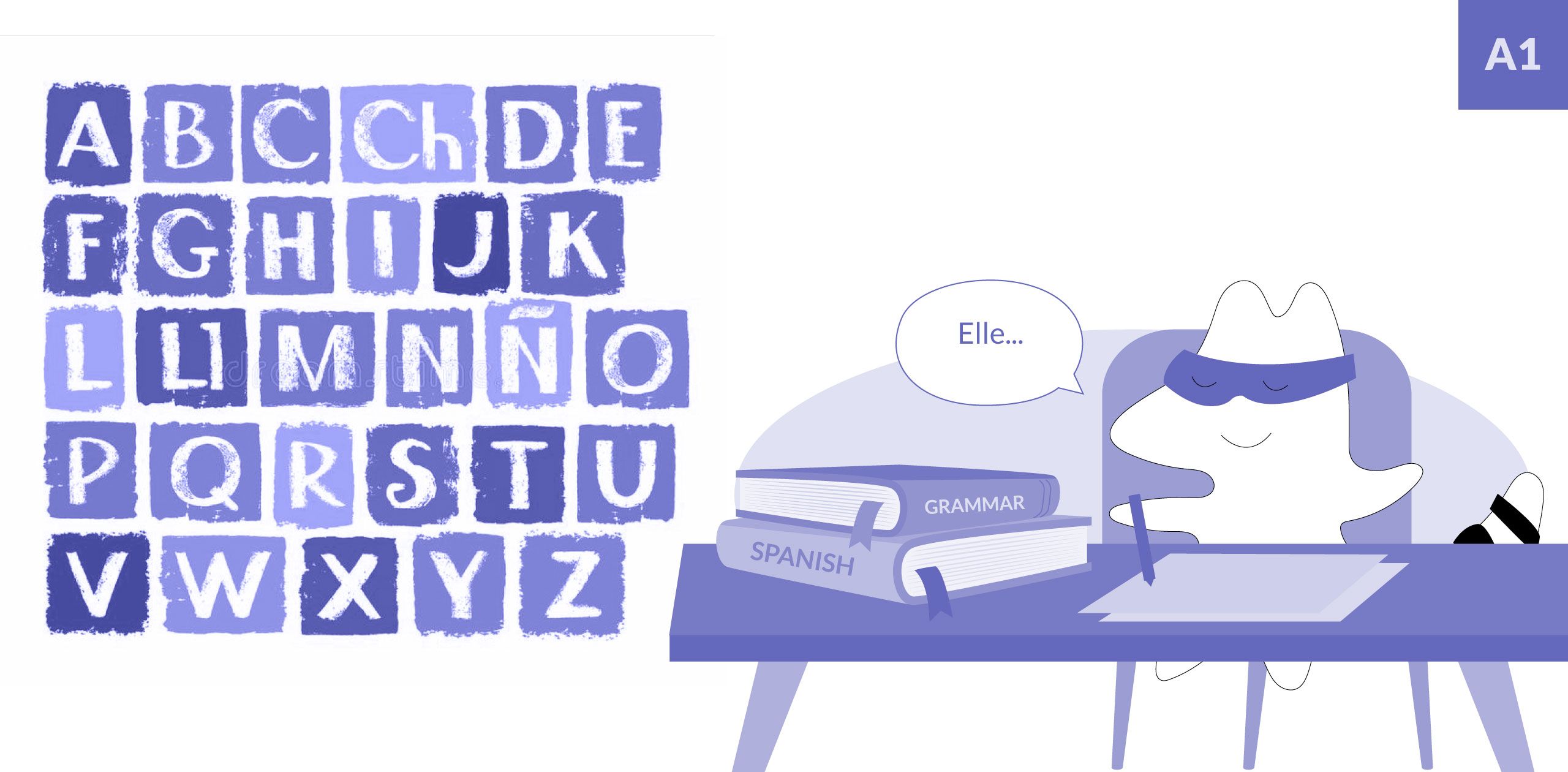
In the vast world of languages, Spanish stands out as one of the world's most widely spoken. Yet, delving into Spanish goes beyond mastering vocabulary and verb conjugations.
To truly connect with the language and its people, it's crucial to grasp the nuances of its grammatical elements. Among these, possessive adjectives play a pivotal role in expressing ownership and building connections in Spanish conversations.
In this article, we will explain the Spanish possessive adjective system in depth, shedding light on the ways it enhances communication and cultural understanding.
Learn Spanish with Langster
Understanding Possessive Adjectives in Spanish
A possessive adjective is an integral part of Spanish grammar. These small but mighty words help us express possession or ownership, something we do every day.
In English, these are words like “my,” “your,” “his,” “her,” “its,” “our,” and “their.” In Spanish, a possessive adjective is equally important, serving the same fundamental role but with some unique twists that make learning them an interesting journey.
Common Possessive Adjectives in Spanish
Here are some common Spanish short-form possessive adjectives and their English translations. Note that these are unstressed possessive adjectives:
| Singular possessive adjectives | Plural possessive adjectives | English translation |
|---|---|---|
| Mi | Mis | My |
| Tu | Tus | Your |
| Su | Sus | His/Her/Their |
| Nuestro, Nuestra | Nuestros, Nuestras | Our |
| Vuestro, Vuestra | Vuestros, Vuestras | Your |
| Singular possessive adjectives | Plural possessive adjectives | English translation |
|---|---|---|
| Mi | Mis | My |
| Tu | Tus | Your |
| Su | Sus | His/Her/Their |
| Nuestro, Nuestra | Nuestros, Nuestras | Our |
| Vuestro, Vuestra | Vuestros, Vuestras | Your |
Meanwhile, there are stressed possessive adjectives, too, such as:
- mío, mía, míos, mías;
- tuyo, tuya, tuyos, tuyas;
- suyo, suya, suyos, suyas;
- nuestro, nuestra, nuestros, nuestras;
- vuestro, vuestra, vuestros, vuestras.
It's important to note that Spanish possessive adjectives agree in gender (masculine or feminine) and number (singular or plural) with the noun they modify, not the possessor.
For instance, we say mi libro (my book) and mis libros (my books), but also mi casa (my house) and mis casas (my houses).
When to Use Spanish Possessive Adjectives
Spanish possessive adjectives (which are different from possessive pronouns) are used similarly to English, specifying ownership by preceding the noun they modify.
For instance, mi libro translates to "my book," and su coche means "his/her car." Here, mi and su are the possessive adjectives that establish the possessive relationship between the speaker and the object in question.
However, it's important to note that Spanish possessive adjectives are not only about ownership; they also reflect the gender and number of the nouns they modify. Spanish nouns are categorized as either masculine or feminine, and they can be singular or plural.
Consequently, the form of the possessive adjective must agree with these gender and number distinctions.
For example, if you want to express "my house," you would say mi casa, because casa is a feminine noun. If you were talking about "my books," you'd use mis libros, since libros is plural. This agreement between possessive adjectives and nouns adds an additional layer of complexity and precision to the Spanish language.

Differences Between Spanish and English Possessive Adjectives
One key difference between Spanish and English is that Spanish has both short and long forms of possessive adjectives.
A short form possessive adjective (such as mi, tu, su, nuestro, vuestro) is used before the noun, while the long forms (mío, tuyo, suyo, nuestro, vuestro) are used after the noun to add emphasis or clarify meaning.
Another difference lies in the use of the Spanish possessive adjective su/sus. In Spanish, these can mean “his,” “her,” “your” (formal), or “their,” depending on context. This can be a source of confusion for learners, as it requires interpreting the context correctly.
Differences Between a Possessive Pronoun and a Possessive Adjective
In Spanish, possessive pronouns and possessive adjectives are two distinct grammatical constructs used to indicate possession or ownership. Understanding the differences between them is crucial for effective communication.
1. Possessive Adjectives
Possessive adjectives are used to show possession or describe ownership of a specific noun and often come before the noun they modify.
Just like a definite article, possessive adjective must agree in gender and number with the noun it modifies. This means that the form of the possessive adjective changes to match the gender (masculine or feminine) and number (singular or plural) of the noun.
| Example | Translation | Explanation |
|---|---|---|
| Mi perro | My dog | Mi agrees with the masculine, singular noun perro. |
| Sus gatos | His/her/their cats | Sus agrees with the masculine or feminine, plural noun gatos. |
| Example | Translation | Explanation |
|---|---|---|
| Mi perro | My dog | Mi agrees with the masculine, singular noun perro. |
| Sus gatos | His/her/their cats | Sus agrees with the masculine or feminine, plural noun gatos. |
2. Possessive Pronouns
On the other hand, possessive pronouns also indicate possession or ownership, but they replace the noun entirely instead of modifying it. They stand alone in a sentence and do not precede a noun.
| Example | Translation | Explanation |
|---|---|---|
| El coche es mío. | The car is mine. | Mío is a possessive pronoun that replaces the noun coche. |
| Estas flores son tuyas. | These flowers are yours. | Tuyas is a possessive pronoun representing the noun flores. |
| Example | Translation | Explanation |
|---|---|---|
| El coche es mío. | The car is mine. | Mío is a possessive pronoun that replaces the noun coche. |
| Estas flores son tuyas. | These flowers are yours. | Tuyas is a possessive pronoun representing the noun flores. |
Singular and Plural Forms
The singular and plural forms of possessive adjectives in Spanish are directly related to the object or person being referred to, not the possessor.
For example, mi libro translates to “my book,” while mis libros translates to “my books.” This rule applies across all possessive adjectives in Spanish.
The Importance of Gender Agreement
In addition to number agreement, Spanish possessive adjectives must also agree in gender with the noun they modify. This is a distinctive feature of Spanish grammar. For instance, nuestro is used for masculine nouns (nuestro libro - our book), whereas nuestra is used for feminine nouns (nuestra casa - our house).
Long-Form Possessive Adjectives
One unique aspect of Spanish possessive adjectives is the existence of a long form. These are typically used to emphasize the owner of an item, or to distinguish between “his,” “her,” “your,” and “their,” which can be ambiguous when using the short form su.
As mentioned earlier, 'su' can mean 'his', 'her', 'your' (formal) or 'their', which can lead to ambiguity. To avoid confusion, Spanish speakers often use 'de él', 'de ella', 'de usted', or 'de ellos/ellas' instead of 'su' for clarity.
For example, El libro es suyo could mean “The book is his,” '”The book is hers,” “The book is yours,” or “The book is theirs,” depending on the context. However, if you say El libro es de él (The book is his) or El libro es de ella (The book is hers), the meaning becomes clear.

Using Articles with Possessive Adjectives
Another interesting feature of Spanish possessive adjectives is how they interact with definite and indefinite articles. In English, it's incorrect to say “the my book.” In Spanish, however, it's common to use articles before possessive adjectives in certain situations, especially with the long form.
For example, Ese coche es el mío (The car is mine) is a perfectly acceptable sentence in Spanish.
Possessive Adjectives and Family Terms
In Spanish, when talking about a single family member, possessive adjectives are often dropped and articles are used instead. For instance, mi madre would be la madre, and mi hermano would be el hermano. However, this rule doesn't apply when speaking about more than one family member.
For example, if you want to say “my brothers,” you would have to say 'mis hermanos. Additionally, the possessive adjective isn't dropped when an adjective follows the family term (mi hermana pequeña — my little sister).
Other Ways of Expressing Possession in Spanish

When it comes to expressing possession, possessive adjectives are just the tip of the iceberg. Spanish has a range of structures and expressions that can be used to show ownership, each with their own nuances and uses.
De + Noun
One common way to express possession is using de followed by a noun. This structure is similar to “of” in English.
Spanish
English
La casa de María.
Maria's house.
Tener + Noun
Another way to express possession is using the verb tener (to have) followed by a noun.
Spanish
English
Yo tengo un libro.
I have a book.
Expressions of Quantity
Spanish also has various expressions of quantity that can help you indicate possession. For example, *poco (a little), bastante (enough), and demasiado (too much), among others.
Spanish
English
Tengo muchos libros.
I have a lot of books.
Ella tiene pocos amigos.
She has few friends.
Demonstrative Determiners
Demonstrative determiners can also be used to express possession in a roundabout way. These include este (this), ese (that), aquel (that over there), and their respective feminine and plural forms.
Spanish
English
Este libro es mío.
This book is mine.
Esos zapatos son tuyos.
Those shoes are yours.
Reflexive Verbs
Some Spanish verbs are reflexive, meaning they reflect the action back on the subject. These can be used to show possession in a more indirect way. For example:
Spanish
English
Ella se compró un coche.
She bought herself a car.
Conclusion

Mastering possessive adjectives is crucial for effective communication in the Spanish language. These words, though small, play a big role in expressing possession and ownership. By understanding their usage, variations, and the nuances that distinguish them from their English counterparts, language learners can enhance their Spanish fluency and comprehension.
So, why not use an entertaining, interactive app like Langster to start mastering these important grammar items?
Remember to pay attention to gender and number agreement, the use of short and long forms, and the unique rule about body parts and personal items. With practice, using Spanish possessive adjectives will become second nature.
Learn Spanish with Langster









